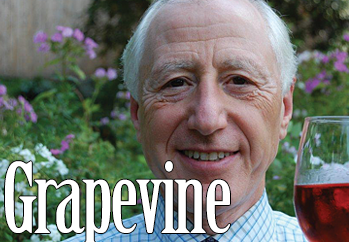A Winter’s Virtual Trip to an Unsung Italian Region
Opinion Advocates for ideas and draws conclusions based on the author/producer’s interpretation of facts and data.
 In my travels through wine regions and wine trade events, I invariably find myself favoring a particular subregion or varietal. The experiences of enjoying the culture, landscape and wine of numerous locales, here and abroad, have left fond memories etched in my long-term brain cells.
In my travels through wine regions and wine trade events, I invariably find myself favoring a particular subregion or varietal. The experiences of enjoying the culture, landscape and wine of numerous locales, here and abroad, have left fond memories etched in my long-term brain cells.
One of my fondest memories has been buried deep in those brain cells and was brought to the forefront last week. Amongst our many trips to Italian cities and countryside, my wife and I have enjoyed Tuscany the most. Its history and climate set the stage for a complete immersion in the grandeur of Florence, the medieval aura of San Gimignano and the sun-drenched grapevines amidst acres of Chianti Classico countryside.
But on several trips, we ventured beyond the Tuscan borders into another favorite Italian region, Umbria, the land-locked territory to the east of Tuscany. It was here that we experienced what most visitors miss as they are lured to the singularly unique Tuscany. Culture, landscape and wine – wine from indigenous grapes not grown anywhere else in Italy – combine to create the impression of a well-guarded secret to be shared by the cognoscenti.
But what an experience, spending time in Umbria! The landscape and architecture easily inspire a stage set for an epic Hollywood movie – rambling hills planted to grapes, olive trees and vegetables; quiet back streets replete with hole-in-the-wall espresso bars and little old ladies ambling along, massaging their rosary beads; and magnificent hilltop cities rising above the ancient battlefields below. The indigenous red wine of the region – Sagrantino – has been produced and consumed by the locals near the south-central town of Montefalco for centuries, rarely making its way beyond the region.
When visiting the major cities of Umbria, we were transported to the 16th century as we sat at an outdoor café with a forkful of the local pasta in one hand and a glass of Sagrantino always at the ready to wash down the rustic cuisine spread across the table.
Ah, the Sagrantino. One of the nearly 2,000 indigenous grapes grown in Italy, it has received little recognition in the United States. I first encountered it at a tasting sponsored by the Montefalco Consortium a few years ago and was immediately smitten with its intense inky purple color, exotic bouquet of black cherries and blackberries, earthy aroma and bold tannins.
The Sagrantino grape has a long history of plantings, but by the 1960s was in decline and on a path toward extinction. Saved by several stalwart winemakers, it is now reaching new heights. Production has quadrupled over the last 10 years as dozens of new wineries have sprung up.
One unique attribute of the grape is its thick skin, which is the source of one of the highest levels of polyphenols (including resveratrol) of all grapes.
In past years I was offered samples from the Montefalco Consortium’s United States representatives at several of their trade tasting events. More recently, I tasted several Montefalco Sagrantinos that rekindled my passion for this wine.
Of the wines I evaluated, three stood out. Each was redolent of black fruits and a bit of spice. Each displayed an excellent balance of fruit and acid. The varying levels of tannins reflected the individual winemakers’ preferences, but all were ageworthy for the next 10 to 12 years.
The wineries and their offerings, which I heartily recommend, are readily available at local wine shops: Arnaldo-Caprai Collepiano, my first introduction to Sagrantino and still my personal favorite, Perticaia and Scacciadiavoli. As I savored and enjoyed each one, memories rushed to my brain cells and I found myself, for a few precious minutes, transported to idyllic Umbria, basking in the glory of this ancient land.
Nick Antonaccio is a 45-year Pleasantville resident. For over 25 years, he has conducted wine tastings and lectures. Nick is a member and program director of the Wine Media Guild of wine journalists. He also offers personalized wine tastings. Nick’s credo: continuous experimenting results in instinctive behavior. You can reach him at nantonaccio@theexaminernews.com.
